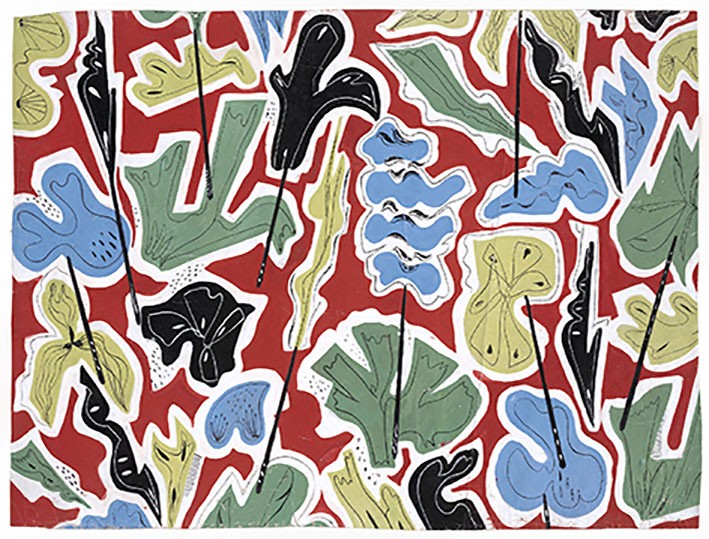Ruth Hildegard Geyer-Raack
Ruth Hildegard Geyer-Raack (1894–1975) was an interior designer, muralist and textile designer whose reputation in the Weimar Republic extended well beyond Berlin. She specialised in high-quality, up-market interior design. With sober elegance, she harmoniously blended modern furnishing styles as antithetical as Bauhaus and art déco. Drawing on the museum’s own holdings, the permanent exhibition at the Berlinische Galerie will, for the first time, display an original fabric produced at the “Vereinigte Werkstätten”, together with 12 selected fabric and wallpaper patterns and 15 photographs of client interiors.
In her early works, Ruth Geyer-Raack combined traditional floral motifs with geometric abstraction. As surviving photographs show, her murals covering big walls in private and public interiors were extraordinary for the times. These cheerful imaginative worlds inspired by nature helped to generate a warm, modern ambience quite special in character.
Documentary photographs and the exhibition booklet accompanying the “Internationale Raumausstellung” (IRA) in Cologne in 1931 reflect her career at its peak: alongside celebrated innovative designers of various styles, such as Bruno Paul, Adolf Loos, Le Corbusier and Marcel Breuer, she was the only woman to contribute proposals for a lady’s living room and bedroom.
Selected colour patterns for wallpapers and fabrics from the post-war period show that Geyer-Raack was absorbing contemporary trends without relinquishing her personal, soft, modernist forms. At the Galerie Bremer, a significant cultural hub in West Berlin, she showed black-and-white photographs to document a collection of shelves with distinctive diagonals. She designed simplified patterns of circles, triangles or linear structures to support the fast, value-for-money serial production of fabrics and wallpapers. To ward against cool severity, she interspersed fine curving lines characteristically combined with warm, friendly, low-key shades of colour.
